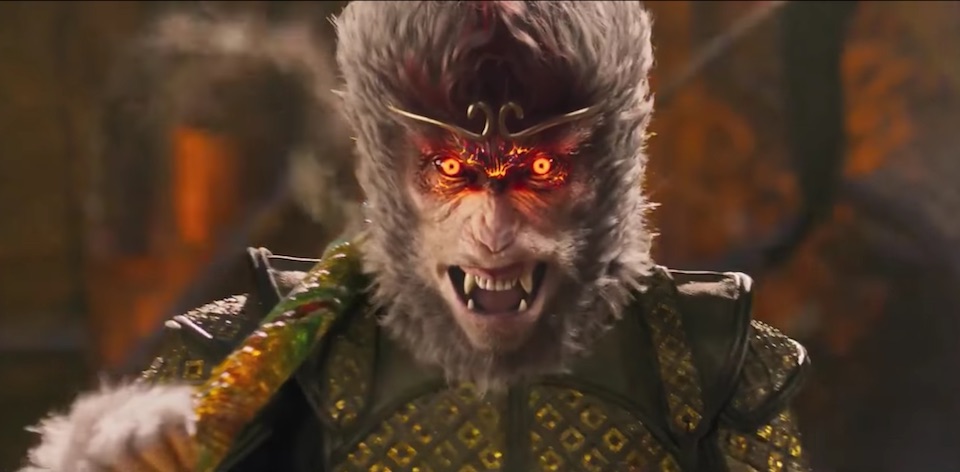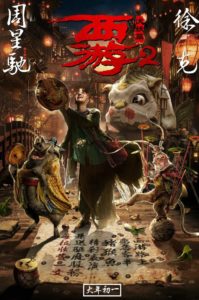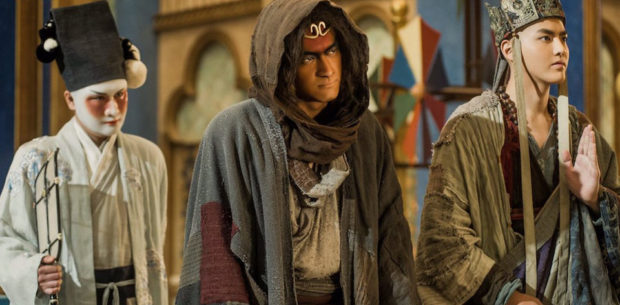The much-hyped first collaboration between the legendary director Tsui Hark and “King of Comedy” Stephen Chow doesn’t change the game, but it is unapologetically joyful in its outlook. Chow’s 2013 epic Journey to the West: Conquering the Demons was the highest grossing film in China at the time of release. Based loosely on the 16th century tale that many westerners know as Monkey, it highlighted the comedy/action capering that Chow is known for, but on such an epic scale that it eclipsed similar stories in its vicinity.
In an almost completely recast sequel, monk Tang Sanzang (Kris Wu) has tamed the Monkey King (Kenny Lin) following the death of Miss Duan, but their conflict has now become one of bitter squabbling and destructive infighting. Continuing their journey west in search of the Buddhist sutras, together with Pigsy and Sandy (Mengke Bateer), they encounter a variety of demons along the way and must put aside their differences to achieve victory.
JOURNEY TO THE WEST: THE DEMONS STRIKE BACK (西遊伏妖篇) is a monumentally silly film, and that’s kind of the point. From the rubber-faced CG, that gives various characters over-the-top cartoon reactions, to the musical number about a naughty Monkey, everything is designed to be a festival of colourful visuals, showcasing Chow’s comedy chops and Hark’s mastery of large-scale action pieces. The episodic nature of the legendary ‘journey’ lends itself to the style, and the thin script and audiences alike have no choice but to go along with it.
It’s almost inconsequential that the original cast hasn’t returned for the second entry, as the actors are subservient to the spectacle. The one exception is the absence of Bo Huang’s wonderful turn as the Monkey King in the first entry, and it’s a shock to the system seeing someone 14 years his junior playing the same role several years later, especially when the focus is more squarely on Monkey this time around. Kris Wu’s Tang Sanzang is every bit the straight man his predecessor established. Mengke Bateer’s limits are acknowledged by reworking his character into a giant CG fish demon, an amusing prop to be carried throughout the film.
As the umpteenth ancient structure comes tumbling down around Monkey and the gang, you’d be forgiven for feeling a sense of repetition to proceedings, even if it is in the stunningly beautiful photography of some India-inspired sets. Yet all cynicism disappears with the last act of the film, an unabashedly bombastic action sequence that features a giant rock monkey, multiple Buddhas and a Immortal Gold Vulture. If you can’t find some fun in that, you really must be trippy (taka).
[stextbox id=”grey” bgcolor=”F2F2F2″ mleft=”5″ mright=”5″ image=”null”]2017 | China | DIR: Tsui Hark | WRITER: Stephen Chow | CAST: Kris Wu, Kenny Lin, Mengke Bateer, Bei-Er Bao, Chen Yao | DISTRIBUTOR: Sony | RUNNING TIME: 109 minutes | RELEASE DATE: 28 January 2017 [/stextbox]






